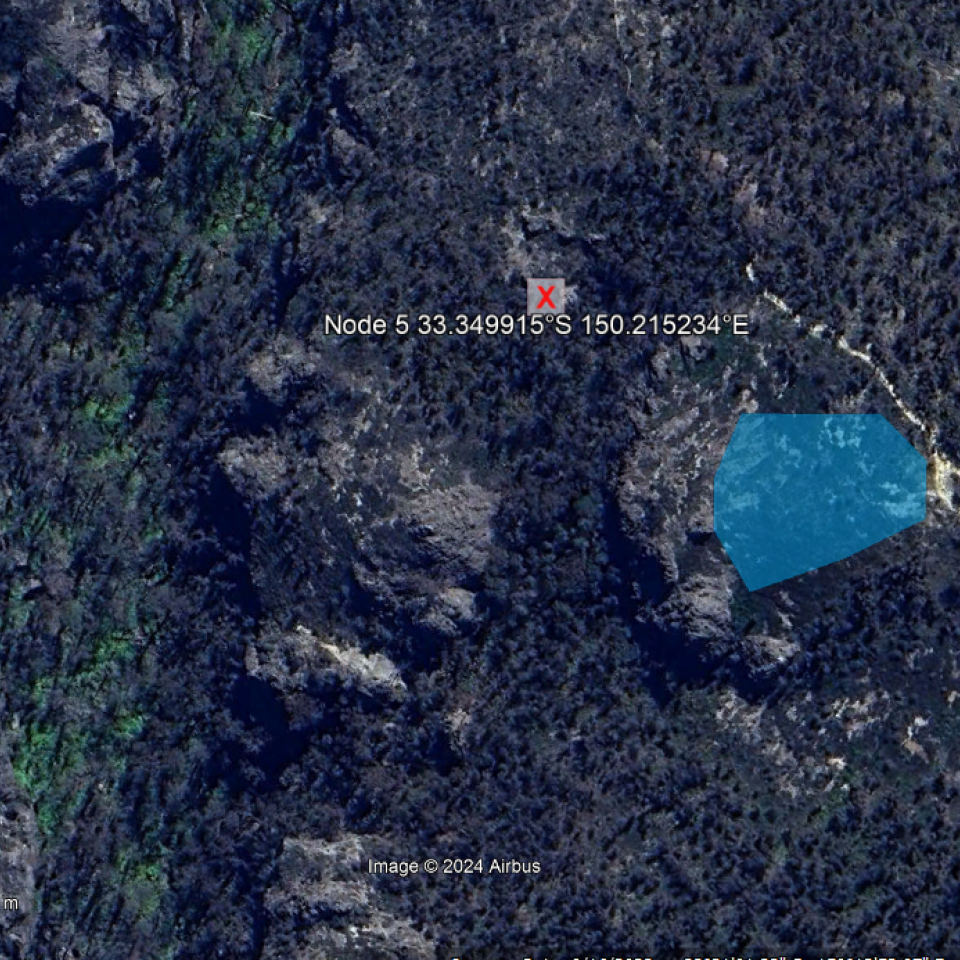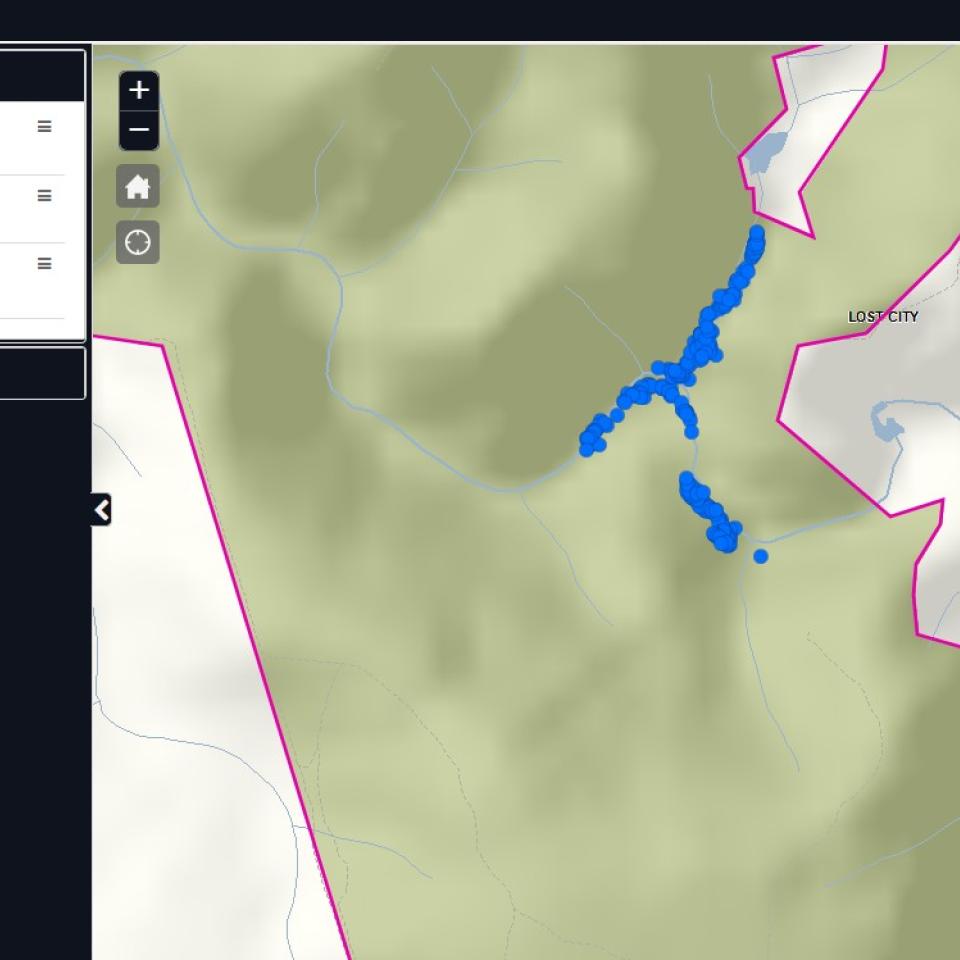What's wrong with this lease proposal?
The three glamping proposals are incompatible with the reserve’s core heritage value, its pagoda landscapes, which may be why the NPWS claim these developments aren't in one. There are five reasons why this private development lease should be rejected and this 2024 briefing further explains what's wrong with these proposals.
The NSW National Parks and Wildlife Service (NPWS) couldn’t even provide an accurate lease notice for Wild Bush Luxury resorts exhibited in May 2024. The GPS co-ordinates and the shape files of the three resort sites didn’t correspond, and a new notice had to be prepared and readvertised with correct co-ordinates. In fact it took the NPWS three goes at advertising the lease notice description to get it right.
While the NPWS have difficulty locating the proposals on a map, they had no problem advising Environment Minister Penny Sharpe these proposals aren’t in pagoda landscapes. The proposals appear to be in pagoda landscapes, and future patrons will want to enjoy viewing them from their expensive accommodation (see my photo gallery of the proposed lease sites, the figure below or perhaps decide this issue for yourself by uploading to Google Earth the KML files of the resort locations at the end of this page).
From the submissions analysis report it appears the NPWS recommended to their Minister that the lease proposal was of low impact before the environmental assessments are published. After obtaining this report through a freedom of information application, environment groups issued a media statement accusing the NPWS of bias. This submissions report's allegation that these private developments are not in pagoda landscapes, is similar to the Forestry Commission's hair-splitting rainforest definitions of the 1970's, that reasoned the presence of one eucalypt tree meant an area wasn’t rainforest and could be logged. The NPWS has since denied it ever stated the resorts are not in pagoda landscapes, but their submissions analysis report says exactly that on page 4, and notice they underlined the 'not' for emphasis.
Take action - write to Premier Chris Minns.

Before re-exhibition, the lease notice grid reference was 150 metres north-west of glamping Zone 3 polygon (in blue). The rocks in the image are pagodas. The entire image depicts various elements of a pagoda landform. The NPWS will map pagoda landscapes to avoid the glamping zones - in a backwards environmental assessment process to justify development, instead of mitigating impact.
Undertakings in the reserve's Master Plan that unique geological features and habitats would be protected have no effect because, not only do such plans have no legal force, a subsequent environmental assessment processes can not require relocation of these development zones to avoid environmental impacts.
The route of the Gardens of Stone Pagoda Walk, currently under construction, was largely determined by the proposed resort sites selected by the developer. To squeeze a multiday walk in the area between the resort sites, the walk meanders over Carne Creek catchment. The proposed walk should present the values of this superb reserve to the people of NSW, not be designed to meet developer needs. The environmental assessments for the proposed walk should have been exhibited. It is afterall a key attraction for this reserve. This is not to say it won't be a great walk, but through public exhibition and review it would become the best it can be, with the least environmental impact.
Take action - write to Premier Chris Minns.
Further, examination of BioNet website has revealed that the Lost City walking track appears to have been built over a large population of Veronica blakelyi , a threatened plant. The public was again denied an opportunity to push for mitigation or impact avoidance proposals through public exhibition processes. The Lost City Review of Environmental Factors and accompanying assessments haven't been published as promised by the NPWS, and are being sought under Freedom of Information laws. It will be interesting to discover whether these environmental reports contain mitigation measures and if these were implimented as the track passes through most of the plant population shown below.

Lost City walk was pushed through a Veronica blakelyi (NSW status E1) population show by the blue dots - source Bionet website. The walking track is located beside the creeks and passes through most of this plant population. The extent of plant removal for the walking track isn't shown.
The management principles of the National Parks and Wildlife Act state that visitor use must be compatible with heritage conservation, which includes protection of endangered species. Surely application of these principles requires environmental assessments for visitor facilities in a conservation area to determine where and how proposals are undertaken, if at all, and not the application of Master Plans or the policies of a resort developer done before these assessments.
Destination Pagoda, developed by environment groups, explains the application of this management principle as follows: "where developments are close to or may impact high-value features, then facilities should be located and designed to minimise environmental damage. The rarer the value, the more protection is required." The Gardens of Stone region is a wonderland, dense in heritage diversity, which makes application of this principle imperative.